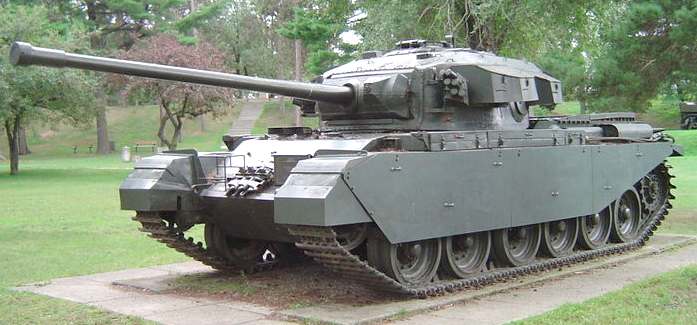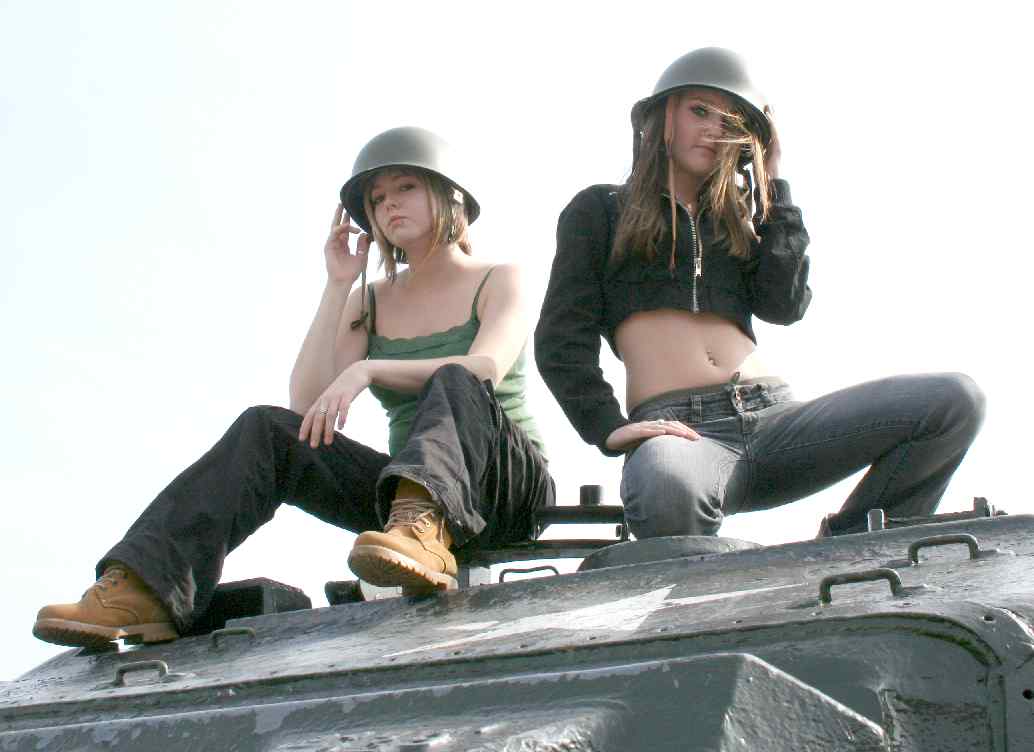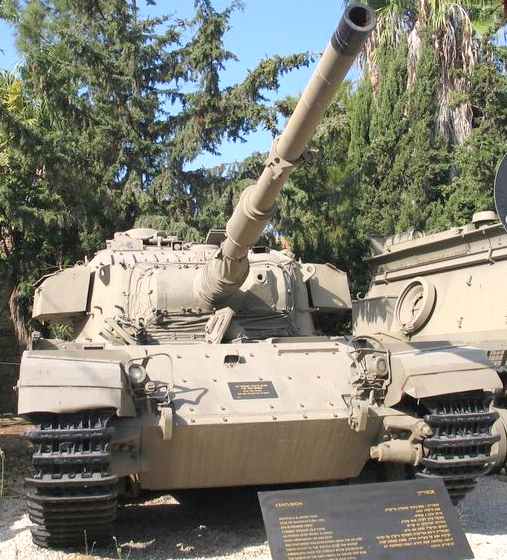|
CENTURION TANK
|
||||||||||||||||||||||
|
HOME | BIOLOGY | FILMS | GEOGRAPHY | HISTORY | INDEX | INVESTORS | MUSIC | SOLAR BOATS | SPORT |
||||||||||||||||||||||
|
The Centurion was the primary British Main Battle Tank of the immediate post-war era, and considered by many to be one of the best British tank designs of all time. Designed during the Second World War it served in Europe, but arrived just too late for combat. It went on to provide excellent service during the Korean War where it outperformed both US and Soviet designs by a wide margin. It would go on to be one of the most widely used tank designs, equipping armies around the world, with small numbers still in service until the 1990s.
Centurion Mk 3
History
In 1943, the Department of Tank Design was asked to produce a new design for a heavy cruiser tank under the designation A41. After a series of fairly marginal designs in the A series in the past, and after facing the dreaded German 88 mm gun, the War Office asked for a major overhaul, demanding increased durability, reliability, a maximum weight of 40 tons, and the ability to withstand a direct hit from the aforementioned 88 mm gun.
Tank Design responded by extending the long-travel 5-wheel suspension used on the Comet with the addition of a 6th wheel and an extended spacing between the 2nd and 3rd wheels. The Christie suspension with internal vertical spring coils was replaced by a Horstmann suspension with external horizontal springs. The hull was redesigned with welded sloped armour, and featured a partially cast turret mounting the highly regarded 17 pounder main gun and a 20 mm Polsten cannon. With a Rover-built Rolls-Royce Meteor engine, a version of the Rolls-Royce Merlin, the new design would have excellent performance.
It wasn't long into the programme before it became clear that the requirement to withstand the 88 mm would be impossible to fill with the given weight requirements. The original specification had been set so that the A41 could be carried on the existing Mark I and Mark II transport trailers, both of which were limited to a 40 ton load. In one of the few instances on record, the War Ministry decided it would be a better idea to build new trailers than hamper what appeared to be a superb design. Even before prototypes of the original 40 ton design were completed, the design of a heavier version was well underway. The new version carried armour equal to the heaviest infantry tanks, and cross-country performance better than even the early cruisers. The A41 was the first British tank that could "do it all", leading to the new designation, universal tank.
Prototypes of the original 40 ton design, the Centurion Mark I, had 76 mm of armour in the front glacis, thinner than the current infantry tank designs like the Churchill which had 101 mm, but the turret was extremely well armoured at 152 mm. It was, however, extremely mobile and able to easily outperform the Comet in most tests. The uparmoured Centurion Mark II soon arrived, featuring a new 118 mm thick glacis and the sides and rear increased from 38 mm to 51 mm. Only a handful of Mk.I's had been produced when the Mk.II replaced it on the production lines, which were soon expanded to include Leyland, the Royal Ordnance Factories at Leeds and Woolwich, and Vickers at Elswick.
Soon after introduction, Royal Ordnance finished work on the extremely powerful 20 pounder tank gun. By this point the usefulness of the 20 mm had been called into question, so it was replaced with a BESA machine gun in a completely cast turret. The new Centurion Mark III also featured a fully automatic stabilization system for the gun, allowing it to fire accurately while on the move, dramatically improving battlefield performance. The Mk.III was so much more powerful than the Mk.I and Mk.II that the earlier designs were removed from service as soon as new Mk.III's arrived, and converted into the Centurion ARV Mark 1 armoured rcovery vehicle for REME use.
The 20 pounder was used only for a short time before the Royal Ordnance Factories introduced the now famous 105 mm L7 gun. All later variants of the Centurion, from Mark 5/2 on, used the L7. A total of 24 variants and sub-variants were produced.
The Centurion was used as the basis for a range of specialist equipment, including engineering variants with a 165 mm demolition gun. It is one of the longest serving designs of all time from the Korean War to the First Gulf war.
Thirteen basic marks of the Centurion tank were produced between 1945/46 and 1961/62.
The Sunshine Girls ride a Centurion Tank - Eastbourne
VARIANTSUK variants
UK specialist variants
Sho't Kal Alef
Non-UK variants
Combat history
REFERENCES and LINKS
A taste for adventure capitalists
Solar Cola - a healthier alternative
|
||||||||||||||||||||||
|
This
website
is Copyright © 1999 & 2006 NJK. The bird The name '1824' is a trade mark of Solar Cola Ltd. All rights reserved. Max Energy Limited is an educational charity. |
||||||||||||||||||||||
|
AUTOMOTIVE | BLUEBIRD | ELECTRIC CARS | ELECTRIC CYCLES | SOLAR CARS |


